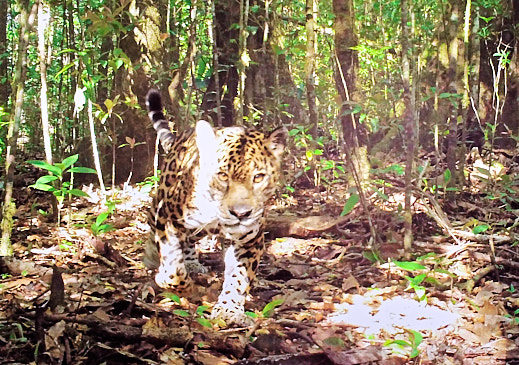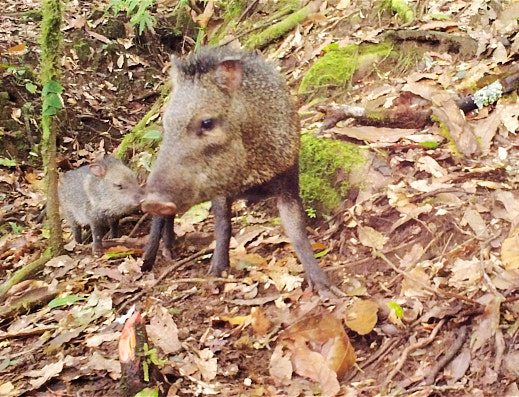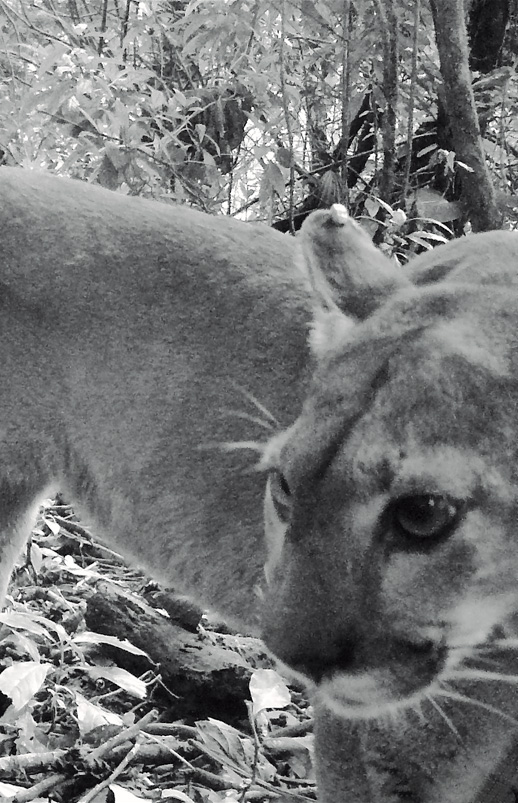WILDLIFE SURVEILLANCE
The intense poachers’ activity in recent years has caused local populations of felines, white-lipped peccaries and many other animals to be declared almost extinct in many parts of Panama. However, white-lipped peccaries, considered extinct in many areas, have recently been observed by local residents in temporal patches along
the buffer zone of Cerro Hoya National Park . These scenarios are enhanced by the lack of knowledge about the species’natural history and their role in the nature web, and also the lack of science-oriented information to drive the action of government authorities.




Our camera trap project aims to put wildlife under long-term surveillance , with special attentionpaid to endangered or critically endangered species. We will use this information to feed a local environmental education programme to schools and communities, to monitor the status of the wildlife in the area and the effectiveness of the conservation efforts, and to produce education materials to promote local awareness towards wildlife and its conservation.
A core part of the project will be the deployment of 30 state of the art camera traps in different parts of the national park, checked every 50 days, during five consecutive years. Initially, the surveillance will last for one year after which an assessment will be conducted to make the necessary amendments, if needed.
During the last years the land cover change, mainly for extensive cattle farming and agriculture, has increased due in part to the lack of economic opportunities and the lack of knowledge about the environmental values that Panama’s national parks possesses. These changes have enhanced the conflict between humans and wildlife, especially wild cats.
According to local people jaguars have attacked cattle and horses that are kept on pasture land inside the park or in its buffer zone. Usually, the quick solution to the problem is the hunting and killing of the wild cats. One important issue is the lack of knowledge about the role that this and other wildlife plays in the nature web.
The only known systematic surveillance study conducted in CHNP was developed between 2014 and 2015 by an American student, Jessica Fort. However, this study was preliminary and did not cover much of the park area.
Our project will deploy new camera traps in new areas never surveyed before, inside the park and in the buffer zone. This information will prove to be vital for stakeholders and managers of the Ministry of Environment in Panama, and will bolster the promotion of Panama Wildlife Conservation as an active collaborator in the conservation of the CHNP.
